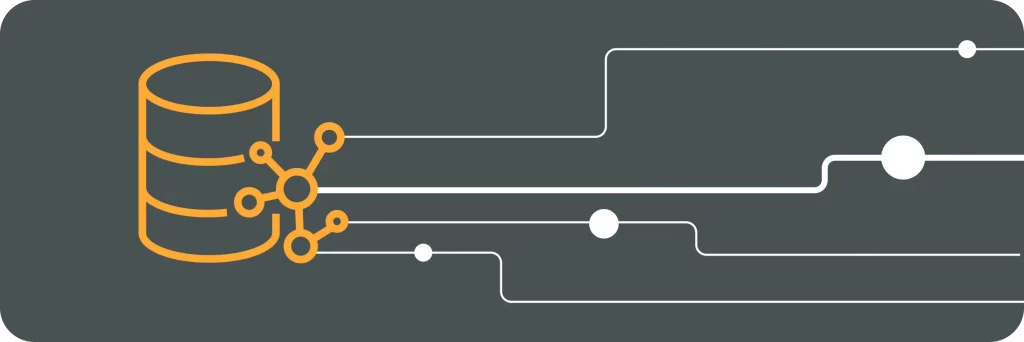In today’s digital era, optimizing costs has become a top priority for businesses operating in the cloud. Amazon Relational Database Service (RDS) offers a Preview Environment that allows users to test new features and functionalities before they are generally available. In this article, we will explore cost optimization strategies specifically tailored for Amazon RDS Database Preview Environment, ensuring that you can take full advantage of its benefits while keeping your expenses in check.
Understanding Amazon RDS Database Preview Environment
Before diving into cost optimization techniques, let’s first understand what the Amazon RDS Database Preview Environment entails. This feature enables users to try out the latest enhancements and features of Amazon RDS before they are released for general availability. With this proactive approach, businesses can gain insights into the upcoming updates and assess how they fit into their existing database infrastructure.
The Amazon RDS Database Preview Environment provides users with a unique opportunity to stay ahead of the curve. By accessing and testing new features as soon as they are available for testing, businesses can gain an early understanding of the upcoming updates without impacting their production database. This early access allows them to evaluate the potential impact on their existing workflows and infrastructure, making informed decisions and planning for future enhancements.
Key Features of Amazon RDS Database Preview
The Amazon RDS Database Preview Environment offers a host of valuable features that make it an enticing option for businesses seeking to optimize costs. Let’s take a closer look at some of these key features:
- Early Access to New Features: With the Preview Environment, users can access and test new features as soon as they are available for testing. This not only provides businesses with a competitive advantage but also allows them to stay up to date with the latest advancements in Amazon RDS. By gaining early access, businesses can evaluate the potential impact on their existing workflows and infrastructure, enabling them to make informed decisions and plan for future enhancements.
- Isolated Testing Environment: The Preview Environment allows users to create a separate testing environment that doesn’t impact the existing database infrastructure. This isolation ensures that any experiments or tests performed in the Preview Environment do not interfere with the production environment. Businesses can freely explore and investigate new features without worrying about the impact on their critical systems. This level of isolation reduces the risks associated with untested updates and provides a safe space for businesses to experiment and innovate.
- Feedback Loop: The Preview Environment also enables users to provide feedback and suggestions on the new features and enhancements. This feedback loop is crucial in the iterative development process, as it allows businesses to contribute to the improvement and refinement of the upcoming updates. By actively participating in the feedback loop, businesses can help shape the final product and ensure that it meets their specific needs and requirements.
Benefits of Using Amazon RDS Database Preview
Utilizing the Amazon RDS Database Preview Environment can bring several benefits to businesses. Let’s explore some of the key advantages:
- Early Evaluation: By gaining early access to new features, businesses can evaluate their potential impact on their existing workflows and infrastructure. This evaluation helps in making informed decisions and planning for future enhancements. It allows businesses to assess whether the upcoming updates align with their goals and objectives, ensuring that they can leverage the new features effectively.
- Reduced Risks: With the isolated testing environment, businesses can experiment and investigate new features without worrying about the impact on their production environment. This reduces the risks associated with untested updates. By thoroughly testing the new features in the Preview Environment, businesses can identify any potential issues or conflicts before deploying them in their production environment. This proactive approach minimizes the chances of disruptions and ensures a smooth transition to the updated version of Amazon RDS.
- Increased Efficiency: The Preview Environment allows businesses to gain familiarity with upcoming changes and update their processes accordingly. By getting hands-on experience with the new features, businesses can identify areas where they can improve their workflows and streamline their operations. This increased efficiency translates into time and cost savings, as businesses can leverage the full potential of Amazon RDS and optimize their database infrastructure.
Strategies for Cost Optimization in Amazon RDS
While the Amazon RDS Database Preview Environment is a valuable tool, it is essential to implement cost optimization strategies to ensure you derive maximum value from your cloud investment. Here are some strategies to consider:
Efficient Resource Management
One of the key aspects of cost optimization is efficient resource management. By regularly monitoring and analyzing your database usage patterns, you can identify idle resources and eliminate or right-size them. This can be done by leveraging the monitoring capabilities provided by Amazon RDS, which allow you to track metrics such as CPU utilization, storage usage, and network traffic. By understanding the resource utilization patterns of your database, you can make informed decisions about resource allocation.
In addition to monitoring, Amazon RDS also provides automation tools and features that can help streamline resource allocation and automate resource optimization. For example, you can use the Amazon RDS Performance Insights feature to identify and troubleshoot performance bottlenecks in your database. By leveraging these automation tools, you can ensure that your database is always running at optimal efficiency, minimizing unnecessary costs.
Optimizing Performance for Cost Efficiency
Database performance plays a crucial role in cost optimization. By fine-tuning your database configurations, optimizing queries, and leveraging appropriate indexing techniques, you can improve performance and reduce the amount of resources needed to handle workloads.
One way to optimize performance is by fine-tuning your database configurations. Amazon RDS provides a range of configuration options that allow you to customize various aspects of your database, such as memory allocation, storage type, and network settings. By carefully selecting the right configuration options for your workload, you can ensure that your database is running efficiently and cost-effectively.
Another important aspect of performance optimization is query optimization. By analyzing and optimizing your SQL queries, you can reduce the amount of resources required to process them. This can be done by identifying and eliminating redundant or inefficient queries, rewriting queries to use more efficient join algorithms, and leveraging query caching techniques. Regularly monitoring your query performance and making necessary adjustments can help you strike the right balance between performance and cost efficiency.
Lastly, appropriate indexing techniques can significantly improve query performance and reduce resource consumption. By identifying the most frequently executed queries and adding appropriate indexes, you can speed up query execution and reduce the need for full table scans. However, it is important to strike a balance between adding indexes and the overhead they introduce during data modification operations. Regularly reviewing and optimizing your database indexes can help you achieve optimal performance and cost efficiency.
Tools for Monitoring and Managing Costs in Amazon RDS
Amazon provides a range of tools to assist users in monitoring and managing costs in the RDS environment. Some notable tools include:
AWS Cost Explorer
AWS Cost Explorer allows users to visualize, analyze, and explore their AWS costs and usage. With its intuitive interface and extensive filtering options, you can gain insights into your Amazon RDS database costs and identify areas for optimization.
AWS Budgets and Forecasts
With AWS Budgets and Forecasts, businesses can set customized budgets and receive alerts when costs exceed the defined thresholds. This tool empowers you to proactively manage and control your costs, ensuring that you stay within your allocated budget while leveraging the benefits of Amazon RDS.
Implementing Cost Saving Measures in Amazon RDS
Implementing specific cost-saving measures in your Amazon RDS environment can significantly impact your overall expenses. Here are a couple of measures to consider:
Reserved Instances and Savings Plans
Reserved Instances and Savings Plans allow businesses to commit to a specific duration of usage in exchange for significant cost savings. These options provide a discounted hourly rate compared to on-demand instances, offering long-term savings for consistent workloads. Evaluate your usage patterns and consider leveraging these cost-saving options wherever applicable.
Deleting Unused DB Instances
Regularly assess your database instances and identify any that are no longer in use. Deleting these unused instances not only reduces your costs but also simplifies your database infrastructure, making it more manageable and efficient.
Best Practices for Cost Optimization in Amazon RDS
To ensure ongoing cost optimization, it’s vital to follow best practices. Here are a couple of best practices to consider:
Regularly Reviewing and Optimizing DB Instances
Database workloads and usage patterns evolve over time. By regularly reviewing and optimizing your DB instances, you can ensure that you are utilizing the appropriate instance sizes and configurations based on your current requirements. This practice helps avoid overprovisioning and reduces unnecessary costs.
Leveraging AWS Free Tier and Cost Management Tools
Take advantage of the AWS Free Tier to test and evaluate new features and services in a cost-free environment. Additionally, leverage the various cost management tools provided by Amazon to stay informed about your costs and identify areas for optimization.
By following these strategies and best practices, businesses can achieve effective cost optimization in the Amazon RDS Database Preview Environment. By doing so, you can harness the full capabilities of your cloud infrastructure while maximizing cost efficiency, leading to a more sustainable and successful cloud journey.




